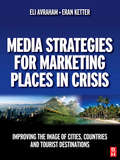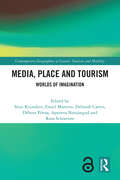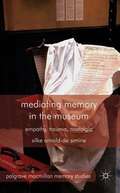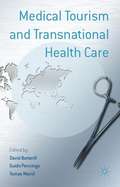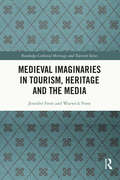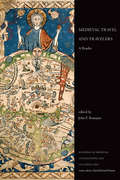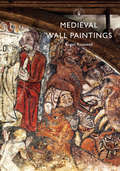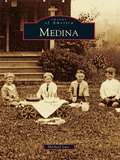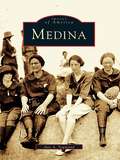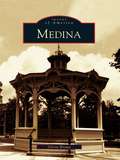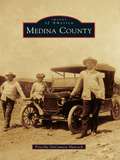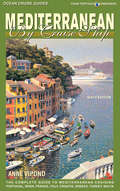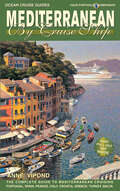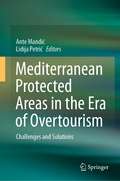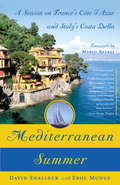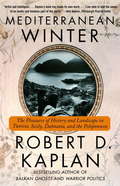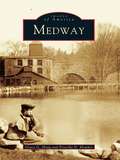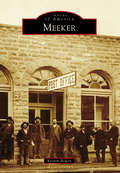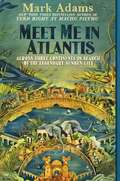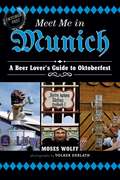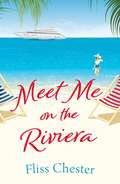- Table View
- List View
Media Strategies for Marketing Places in Crisis
by Eli Avraham Eran KetterGrowing competition between countries and cities over attracting infrastructure, investment, tourists, capital and national and international status mean that today, a negative image is more harmful than ever. Whatever the cause of the negative image, places perceived as dangerous, frightening, or boring are at a distinct disadvantage. Many decision makers and marketers stand by helplessly, frustrated by their knowledge that in most cases, their city's negative image is not based on well-grounded facts. Given that stereotypes are not easily changed or dismissed, the challenge facing these decision makers is great. Analyses of many case studies show interesting examples of places that tried to change a negative image into a positive one, in order to bringing back tourists, investors and residents. Although a great deal of knowledge about crisis communications has accumulated in recent years, very little has been written about strategies to improve places' negative images. The aim of "Media Strategies for Marketing Places in Crisis" is to discuss the various dimensions of an image crisis and different strategies to overcome it, both in practice and theory. "Media Strategies for Marketing Places in Crisis" is based on the careful analysis of dozens of case studies, advertisements, public relations campaigns, press releases, academic articles, news articles, and the websites of cities, countries and tourist destinations.
Media, Place and Tourism: Worlds of Imagination (ISSN)
by Emiel Martens Deborah Castro Débora Póvoa Reijnders, Edited by StijnAccessible and interdisciplinary in nature, this volume highlights the connections between media, tourism and place, bringing together the diverse perspectives, approaches and actors involved in critical issues relating to media tourism worldwide.This book explores new avenues, adopting a global and transnational perspective and placing emphasis on the exploration, analysis and comparison of cases from around the world. Encompassing chapters from a plethora of experts, the volume discusses processes and relationships of power involved in the development and experience of media tourism. This book seeks to broaden the horizons of both the reader and existing academic research into media tourism by including research into, among other topics, Bollywood and Nollywood films, Brazilian telenovelas and South Korean K-pop culture. Illustrated with tables and figures throughout, the volume presents insights from a variety of strands of cutting-edge and empirically rich research, which are collated, compared and contrasted to demonstrate the connections between media, tourism and place around the world.International in scope, this book is an ideal companion for academics and scholars within a wide array of disciplines, such as media studies, tourism studies, fan studies, cultural geography and sociology, as well as those with an interest in media tourism more specifically.The Open Access version of this book, available at www.taylorfrancis.com, has been made available under a Creative Commons Attribution-Non Commercial-No Derivatives (CC- BY- NC- ND) 4.0 license.
Mediating Memory in the Museum
by Silke Arnold-de SimineMediating Memory in the Museum is a contribution to an emerging field of research that is situated at the interface between memory studies and museum studies. It highlights the role of museums in the proliferation of the so-called memory boom as well as the influence of memory discourses on international trends in museum cultures.
Mediation at the Holocaust Memorial in Berlin
by Irit DekelAnalyzing action at the Holocaust memorial in Berlin, this first ethnography of the site offers a fresh approach to studying the memorial and memory work as potential civic engagement of visitors with themselves and others rather than with history itself.
Medical Tourism and Transnational Health Care
by Guido Pennings David Botterill Tomas MainilMedicine and tourism have become separated in contemporary popular consciousness. The former implies anything but a pleasurable experience and the latter presumes a healthy disposition for participation. We argue that this popular conception of the separation of tourism and medicine ignores an historical continuity of lineage from the 18th century pursuit of a 'cure' at resorts and spas, to 20th century notions of holidays as worker welfare through to global patient mobility in the quest for cutting-edge medical interventions in so-called 'untreatable' conditions. Disciplinary divisions within the academy have reinforced the separation between medicine and tourism in popular culture, but there is now an emergent challenge to re-think the medicine/tourism nexus. Under the influence of transnational health care consumption, two very contrasting traditions of Western thought are now confronting one another. This book provides a comprehensive landscape of diverse research communities' attempts to capture its implications for existing bodies of knowledge in selected aspects of medicine, medical ethics, health policy and management, and tourism studies.
Medical Tourism: The Ethics, Regulation, and Marketing of Health Mobility (Contemporary Geographies of Leisure, Tourism and Mobility)
by C. Michael HallMedical and health tourism is a significant area of growth in the export of medical, health and tourism services. Although spas and improved well-being have long been part of the tourist experience, health tourism now includes travel for medical purposes ranging from cosmetic and dental surgery through to transplants and infertility treatment. Many countries including China, Cuba, Hungary, India, Thailand, Malaysia and Singapore actively promote and compete for the medical tourist dollar, while many developed countries also provide niche private services. However, the field of medical tourism is increasingly being subject to scrutiny and debate, particularly as a result of concerns over regulatory, ethical and wider health issues. Drawing on a range of theoretical and methodological perspectives, this book is one of the first to critically address the substantial political, philosophical and ethical issues that arise out of the transnational practices of medical tourism. Through a series of chapters the book engages with key issues such as the role of regulatory and policy structures in influencing medical and health tourism related mobilities. These issues are investigated by considering range of developing and developed countries, medical systems and health economic perspectives. The book adopts a multi-layered perspective to not only investigate the business and marketing practices of medical and health tourism but places these within a broader framework of contemporary globalisation, policy and practice. By doing so it opens up debate of the ethical space in which medical and health tourism operates as well as reinforce the wide ranging perspectives that exist on the subject in both the public and academic imagination. This significant contribution will be of interest to students, academics in tourism and medical policy, trade and economic development fields.
Medieval Imaginaries in Tourism, Heritage and the Media (Routledge Cultural Heritage and Tourism Series)
by Warwick Frost Jennifer FrostThis book examines the pervading influence of medieval culture, through an exploration of the intersections between tourism, heritage, and imaginaries of the medieval in the media. Drawing on examples from tourist destinations, heritage sites, fictional literature, television and cinema, the book illustrates how the medieval period has consistently captured the imagination of audiences and has been reinvented for contemporary tastes. Chapters present a range of international examples, from nineteenth century Victorian notions of chivalry, knights in shining armour exemplified by King Arthur, and damsels in distress, to the imagining of the Japanese samurai as medieval knights. Other topics explored include the changing representations of medieval women, the Crusades and the Vikings, and the challenges faced by medieval cathedrals to survive economically and socially. This book offers multidisciplinary perspectives and will appeal to scholars and students across a variety of disciplines such as cultural studies, history, tourism, heritage studies, historical geography and sociology.
Medieval Travel and Travelers: A Reader (Readings in Medieval Civilizations and Cultures)
It is widely believed that people living in the Middle Ages seldom traveled. But, as Medieval Travel and Travelers reveals, many medieval people – and not only Marco Polo – were on the move for a variety of different reasons. Assuming no previous knowledge of medieval civilizations, this volume allows readers to experience the excitement of men and women who ventured into new lands. By addressing cross-cultural interaction, religion, and travel literature, the collection sheds light on how travel shaped the way we perceive the world, while also connecting history to the contemporary era of globalization. Including a mix of complete sources, excerpts, and images, Medieval Travel and Travelers provides readers with opportunities for further reflection on what medieval people expected to find in foreign locales, while sparking curiosity about undiscovered spaces and cultures.
Medieval Wall Paintings
by Roger RosewellWhat medieval wall paintings remain in English churches tend to be shadows of their former selves - rare fragments of art that have survived not only the Reformation, but successive waves of iconoclastic zeal and unsympathetic restoration. The whitewashed walls of most parish churches belie the riot of color and decoration that once adorned them, but the remnants of paintings tucked into corners or rescued from later layers of paint help us to understand the role of art in medieval religion. Roger Rosewell here offers a guide to the role played by medieval wall paintings, as religious, didactic and commemorative works of art, telling the stories of those who created them and those who used them on a daily basis. He also compares and contrasts religious and domestic wall paintings and uses beautiful color photography throughout to illustrate the story.
Medina
by Michael LuisMedina has long been recognized as the home to wealthy and influential members of Seattle's elite. Industry captains such as Clapp, Blethan, Gates, and Bezos have built estates along Medina's waterfront. Meanwhile, a diverse group of families with a variety of backgrounds have settled the uplands, creating a close-knit community. Farmers, including many of Japanese heritage, first settled the area in the late 1800s. Upon the arrival of the car ferry service to Seattle in 1913, Medina gradually evolved into a commuter suburb for the working class and wealthy alike. In 1940, the first Lake Washington floating bridge ushered in a new era, and with incorporation in 1955 and the opening of the Evergreen Point Bridge in 1963, Medina completed its transformation to a largely residential area. Despite its marvelous growth, Medina has successfully maintained its charm. A new generation of families arrived in the 1990s, filling classrooms and parks, and renewing Medina's original identity: close to the big city, but a world apart.
Medina (Images of America)
by Avis A. TownsendMedina traces the history of a community that came to life with the building of the Erie Canal. Located at a bend in the canal, halfway between Buffalo and Rochester, Medina became a regular stop for barge traffic. The famous Medina culvert--the only tunnel road that goes under the canal--is here, as are the falls and Medina sandstone, quarried and used not only in local buildings but also across the state and even at Buckingham Palace.
Medina (Images of America)
by Gloria BrownIn 1945, Pathfinder magazine selected the village of Medina as a "shining example of small town living" and, with the film company RKO Pathe, produced a 15-minute movie about Medina called Home Town USA. The film focused on the Victorian square and on the nearby tree-shaded streets lined with century homes. But the film did not tell the dramatic story behind the picturesque facade. Medina was hewn out of the Ohio wilderness by Connecticut Yankees, many of them Revolutionary War veterans who brought with them a tradition of democracy and strong community spirit. In 1848, a fire devastated the public square. The citizens rallied, and it was quickly rebuilt. In 1870, another fire wiped out most of the business district. Over the next decade, the square once again rose from the ashes, and the result was a village center filled with handsome Eastlake Victorian-style buildings. That public square sits at the heart of the community whose history this book puts on display.
Medina County
by Priscilla Dacamara HancockMedina County was founded in 1848 by settlers from Europe and the eastern United States. At the time, Native Americans still lived on that land, which they called "Comancheria." Full of hope for a better life, settlers tamed an unfamiliar landscape that was filled with prickly pear cactus, rattlesnakes, coyotes, mountain lions, bison, armadillos, pecans, persimmons, and mustang grapes. The first settlements in Medina County were Castroville, Quihi, Vandenburg, and D'Hanis. New Fountain, New D'Hanis, LaCoste, Rio Medina, Hondo, and others were established later. The settlers worked hard growing cotton and grain and raising cattle, and they retained their old-world customs and religious faith in the face of many challenges. With the building of the Medina Dam, farming changed for the better, and new immigrants arrived to help establish schools and communities. Today the proximity to San Antonio allows people to work in the city while maintaining their homes, farms, and ranches in Medina County.
Mediterranean By Cruise Ship - 6th edition: The Complete Guide to Mediterranean Cruising
by Anne VipondThe destination every cruiser dreams about with its famous cities and islands, history and cultures. This edition includes all ports from Portugal to the Black Sea with additional emphasis on home ports such as Barcelona, Rome, Venice, Athens and Istanbul. Maps for the ports and islands, practical tips on getting about in each port and city with walking tour maps and information on public transit. Color maps and photos throughout.
Mediterranean By Cruise Ship - 8th Edition: The Complete Guide to Mediterranean Cruising
by Anne VipondUpdated and revised in 2023 this guide to Mediterranean cruising has been a cruisers favorite and best-selling guidebook for over 25 years. With precise port maps and detailed text it is indispensable for anyone taking this cruise. Now in its 8th edition, Mediterranean By Cruise Ship is a unique guide showing readers exactly where ships dock and how to get around ports on their own with detail on public transport as well as shore excursion recommendations. Each chapter covers the cruise ports of each country with historical background and concise descriptions of local attractions. Over 400 beautiful color photographs and dozens of maps capture landmarks and layout of each locale. Mediterranean By Cruise Ship also includes a large pull-out color map showing the entire cruise area of the Mediterranean.
Mediterranean Protected Areas in the Era of Overtourism: Challenges and Solutions
by Ante Mandić Lidija PetrićThis book comprises studies that reflect on various influences of excessive tourism development in protected areas, and solutions designed and initiated to mitigate such challenges. A large proportion of tourism in Mediterranean destinations constitutes nature-based tourism, in particular, tourism in parks and protected areas. As a destination experiences higher intensity and density of tourism, the potential conflict between maintaining a healthy natural environment and economic development also increases. This has urged planners and decision-makers to devise and adopt innovative approaches that seek to strike a balance between tourism development and nature conservation. This book demonstrates the importance of collaboration across and beyond disciplines and of all groups of stakeholders for maximization of societal impacts and tourism-related benefits.
Mediterranean Summer
by David Shalleck Erol Munuz“Saturday was dawning warm, with only a gentle wind under a light blue sky as we got under way. . . . With the motor cut out, I could hear the whispered splash of the sea against the hull as we knifed through the Mediterranean. The calming noise, along with the gentle rocking, lulled me into a Zen calm as I went about preparing the crew’s lunch. . . . By keeping just a couple of miles offshore, we had some beautiful sights to our starboard side: the harbor towns of La Napoule and quaint Théoule-sur-Mer, . . . the sensational coastline of the Corniche de l’Estérel. . . . All of this I could see through the porthole in the galley. . . . Italy was only a week away. ” La Dolce Vita at sea. . . An alluring, evocative summer voyage on the Mediterranean and into the enchanting seaside towns of France’s Cote d’Azur and Italy’s Costa Bella by a young American chef aboard an Italian billionaire couple’s spectacular yacht. Having begun his cooking career in some of New York’s and San Francisco’s best restaurants, David Shalleck undertakes a European culinary adventure, a quest to discover what it really means to be a chef through a series of demanding internships in Provence and throughout Italy. After four years, as he debates whether it is finally time to return stateside and pursue something more permanent, he stumbles on a rare opportunity: to become the chef on boardSerenity, the classic sailing yacht owned by one of Italy’s most prominent couples. They present Shalleck with the ultimate challenge: to prepare all the meals for them and their guests for the summer, with no repeats, comprised exclusively of local ingredients that reflect the flavors of each port, presented flawlessly to the couple’s uncompromising taste— all from the confines of the yacht’s galley while at sea. Serenity’s five-month journey starts on the French Riviera, continues along Italy’s western coast to Amalfi, crosses the Tyrrhenian Sea to Sardinia, up to Corsica, and back to St. Tropez for the season-ending regatta. Shalleck captures the glittery Riviera social scene, the distinctive sights and sounds of the unique ports along the way, the work hard/play hard life of being a crew member, and the challenges of producing world-class cuisine for the stylish and demanding owners and their guests. An intimate view of the most exclusive of worlds,Mediterranean Summeroffers readers a new perspective on breathtaking places, a memorable portrait of old world elegance and life at sea, as well recipes and tips to recreate the delectable food.
Mediterranean Winter
by Robert D. KaplanIn Mediterranean Winter, Robert D. Kaplan, the bestselling author of Balkan Ghosts and Eastward to Tartary, relives an austere, haunting journey he took as a youth through the off-season Mediterranean. The awnings are rolled up and the other tourists are gone, so the damp, cold weather takes him back to the 1950s and earlier--a golden, intensely personal age of tourism. Decades ago, Kaplan voyaged from North Africa to Italy, Yugoslavia, and Greece, luxuriating in the radical freedom of youth, unaccountable to time because there was always time to make up for a mistake. He recalls that journey in this Persian miniature of a book, less to look inward into his own past than to look outward in order to dissect the process of learning through travel, in which a succession of new landscapes can lead to books and artwork never before encountered.Kaplan first imagines Tunis as the glow of gypsum lamps shimmering against lime-washed mosques; the city he actually discovers is even more intoxicating. He takes the reader to the ramparts of a Turkish kasbah where Carthaginian, Roman, and Byzantine forts once stood: "I could see deep into Algeria over a rib-work of hills so gaunt it seemed the wind had torn the flesh off them." In these austere and aromatic surroundings he discovers Saint Augustine; the courtyards of Tunis lead him to the historical writings of Ibn Khaldun.Kaplan takes us to the fifth-century Greek temple at Segesta, where he reflects on the ill-fated Athenian invasion of Sicily. At Hadrian's villa, "Shattered domes revealed clouds moving overhead in countless visions of eternity. It was a place made for silence and for contemplation, where you wanted a book handy. Every corner was a cloister. No view was panoramic: each seemed deliberately composed." Kaplan's bus and train travels, his nighttime boat voyages, and his long walks in one archaeological site after another lead him to subjects as varied as the Berber threat to Carthage; the Roman army's hunt for the warlord Jugurtha; the legacy of Byzantine art; the medieval Greek philosopher Georgios Gemistos Plethon, who helped kindle the Italian Renaissance; twentieth-century British literary writing about Greece; and the links between Rodin and the Croa-tian sculptor Ivan Mestrovic. Within these pages are smells, tastes, and the profundity of chance encounters. Mediterranean Winter begins in Rodin's sculpture garden in Paris, passes through the gritty streets of Marseilles, and ends with a moving epiphany about Greece as the world prepares for the 2004 Summer Olympics in Athens.Mediterranean Winter is the story of an education. It is filled with memories and history, not the author's alone, but humanity's as well.From the Hardcover edition.
Medway (Images of America)
by Priscilla N. Howker Grace G. HoagIncorporated in 1713, Medway began as a farming community of two hundred thirty-three. It was not long before the waterpower of the Charles River and Chicken Brook stimulated the formation of cotton and paper mills, straw and boot factories, and a variety of cottage industries. Through vintage images from the 1850s to the 1960s, Medway demonstrates the central importance of the Charles River and the thriving town that grew alongside it. Included are images of trains and streetcars; recreation, such as canoeing, picnicking, and fishing; Woodland Park, a popular stop that included a zoo; and the 1913 bicentennial celebration on the banks of the river. Today, the one-room schoolhouses are gone and the country stores have moved to the mall, but the open town meetings continue and Medway retains its small-town flavor.
Meeker
by Kristin BowenThe free-roaming Ute Indians were the first modern-day people to live in the White River valley. After mounting tensions erupted into violence and the Indian agency near present-day Meeker was attacked, the Ute were soon evicted from northwestern Colorado in 1881. By that time, adventurous people were pressing in at all sides to settle the area. Settlers drawn by land speculation and ranching populated this rural area. Ranching, hunting, guiding, and coal, oil shale, oil, and gas extraction were the ways people made their livings, or hoped to, in this region. Meeker had it all with a touch of Wild West and a promise of the American dream--and all in a setting that would lure Teddy Roosevelt himself. Inside this book are glimpses of the people, traditions, celebrations, and ways of life of those who lived here before us.
Meet Me at the Bamboo Table: Everyday Meals Everywhere
by A. V. CroftsIn our ever-more-globalized world, how better to connect than with food, and who better to connect than a chowhound communications professor? Crofts concocts a multimedia feast of photos, "sketchnotes,” and vignettes, inviting us to everything from Thanksgiving in Germany to a Lunar New Year dumpling party in Seattle. The result is a truly beautiful meditation on how food nourishes community.
Meet Me in Atlantis
by Mark AdamsThe New York Times bestselling author of Turn Right at Machu Picchu sets out to uncover the truth behind the legendary lost city of Atlantis.A few years ago, Mark Adams made a strange discovery: Everything we know about the lost city of Atlantis comes from the work of one man, the Greek philosopher Plato. Then he made a second, stranger discovery: Amateur explorers are still actively searching for this sunken city all around the world, based entirely on the clues Plato left behind.Exposed to the Atlantis obsession, Adams decides to track down these people and determine why they believe it's possible to find the world's most famous lost city and whether any of their theories could prove or disprove its existence. He visits scientists who use cutting-edge technology to find legendary civilizations once thought to be fictional. He examines the numerical and musical codes hidden in Plato's writings, and with the help of some charismatic sleuths traces their roots back to Pythagoras, the sixth-century BC mathematician. He learns how ancient societies transmitted accounts of cataclysmic events--and how one might dig out the "kernel of truth" in Plato's original tale.Meet Me in Atlantis is Adams's enthralling account of his quest to solve one of history's greatest mysteries; a travelogue that takes readers to fascinating locations to meet irresistible characters; and a deep, often humorous look at the human longing to rediscover a lost world.
Meet Me in Atlantis: My Obsessive Quest to Find the Sunken City
by Mark Adams"Adventurous, inquisitive and mirthful, Mark Adams gamely sifts through the eons of rumor, science, and lore to find a place that, in the end, seems startlingly real indeed." -Hampton Sides "Infused with humor and pop culture references, Adams makes what could have been a tedious recitation of theories into an exciting adventure." -Chicago Tribune "Writing with the same jaunty style as Turn Right at Machu Picchu, Adams merrily entertains the lost-cities audience." -Booklist A few years ago, Mark Adams made a strange discovery: Far from alien conspiracy theories and other pop culture myths, everything we know about the legendary lost city of Atlantis comes from the work of one man, the Greek philosopher Plato. Stranger still: Adams learned there is an entire global sub-culture of amateur explorers who are still actively and obsessively searching for this sunken city, based entirely on Plato's detailed clues. What Adams didn't realize was that Atlantis is kind of like a virus--and he'd been exposed. In Meet Me in Atlantis, Adams racks up frequent-flier miles tracking down these Atlantis obsessives, trying to determine why they believe it's possible to find the world's most famous lost city--and whether any of their theories could prove or disprove its existence. The result is a classic quest that takes readers to fascinating locations to meet irresistible characters; and a deep, often humorous look at the human longing to rediscover a lost world.From the Hardcover edition.
Meet Me in Munich: A Beer Lover's Guide to Oktoberfest
by Moses WolffMunich's Oktoberfest, held each year since 1810 from late September through the first weekend in October, is one of the most famous events in Germany. It is a beer drinker's paradise--over the course of sixteen days, more than six million visitors consume nearly two million gallons of specially brewed Oktoberfest beer. For the first-time visitor to the Wies'n (a meadow near Munich's center dedicated to the festival), Oktoberfest can be a little overwhelming. Fortunately, Moses Wolff hasn't missed a day of Oktoberfest in years, and he knows the festival like the back of his hand.
Meet Me on the Riviera (The French Escapes)
by Fliss ChesterJet down to the Côte d'Azur for a Riviera romance...It's a summer of millionaires, martinis and mega-yachts as Jenna Jenkins starts her new job as a party planner in glamorous Monte Carlo. And while the champagne flows on deck - and rumours swirl below - Jenna finds she has a real knack of helping the super-rich go overboard at their glittering events.But behind Jenna's San-Tropez-tanned back, there's a tussle going on for her affections. While her darling boyfriend, Angus Linklater, is embroiled in his own Hong Kong hijinks, Jenna has caught the eye of a mysterious and oh-so-gorgeous billionaire, who is used to getting whatever - and whomever - he wants.With a fabulous wedding to plan, old friends Hugo and Sally bursting with news of their own, and some shady dealings threatening to rock the boat, life in Monaco is never plain sailing. So drop anchor, glam up, and meet me on the Riviera . . .
